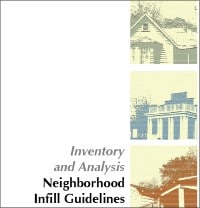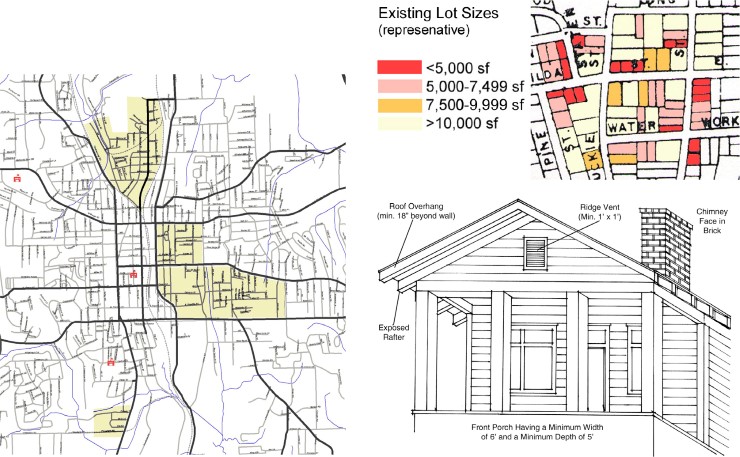
Client:
|
HISTORIC INFILL DISTRICT ANALYSIS & CODE |
| Dalton, Georgia | |
|
The Dalton Historic Infill District Analysis & Code was produced by TSW for the City of Dalton, Georgia, in 2004. While preparing an urban redevelopment plan for four historic Dalton neighborhoods, it became apparent that the city’s existing zoning regulations did not support the context-sensitive revitalization of these neighborhoods. In fact, many of the very elements that made Dalton’s historic neighborhoods unique were actually illegal under these existing regulations. The new zoning code permits and requires new development that is in keeping with their historic sense-of-place. The coding process began with an extensive inventory of existing neighborhood patterns and architectural styles. From this a document was produced showing the elements that made each neighborhood unique, as well as common features. These features were then formulated into the Dalton Historic Infill District Code – a form-based code that is based on historic patterns and includes regulations for several districts, including a mixed-use Neighborhood Commercial district, a Live-Work district and a Single-Family Residential district. Uses in the districts are generally additive, with less intense uses permitted in more intense districts. Because the historic neighborhoods in Dalton are urbanistically similar, with slight variations for style, the Code is organized so that basic principles of good urban design, such as street-oriented building regulations, alley requirements, driveway widths, sidewalk widths, and similar requirements, are applied to all districts. Within each district, additional custom urbanistic requirements are provided. The Code responds to the varied architectural style of each neighborhood by identifying the range of historic architectural styles found in Dalton, defining them in code, and restricting their application to those neighborhoods where they were traditionally present. The code also includes a final layer of regulations for specific neighborhoods to identify those architectural nuances that make a neighborhood unique. For example, in the East Dalton neighborhood, homes traditionally included a bracketed gable entry portico over the front door; the new code requires this. |
|

